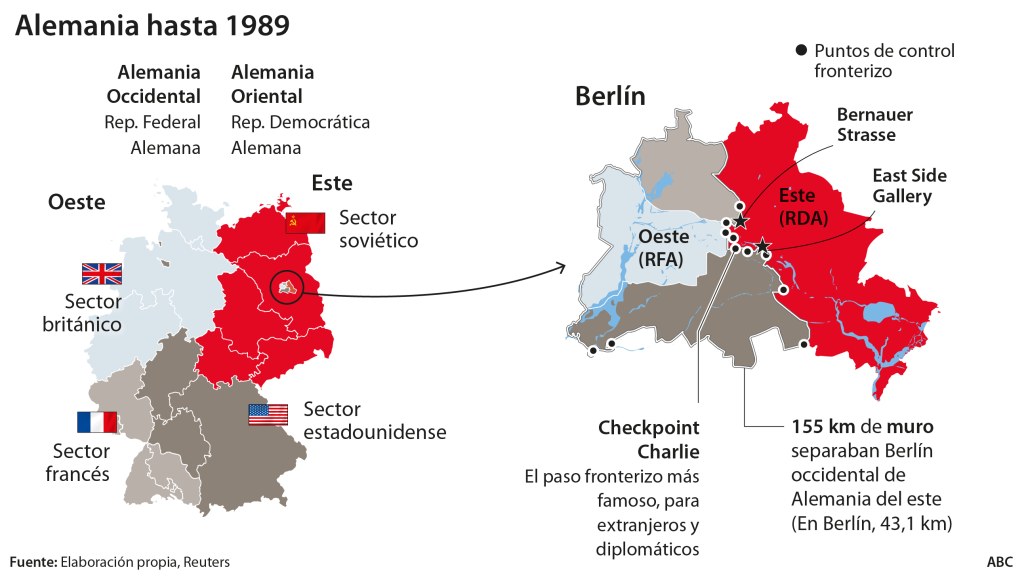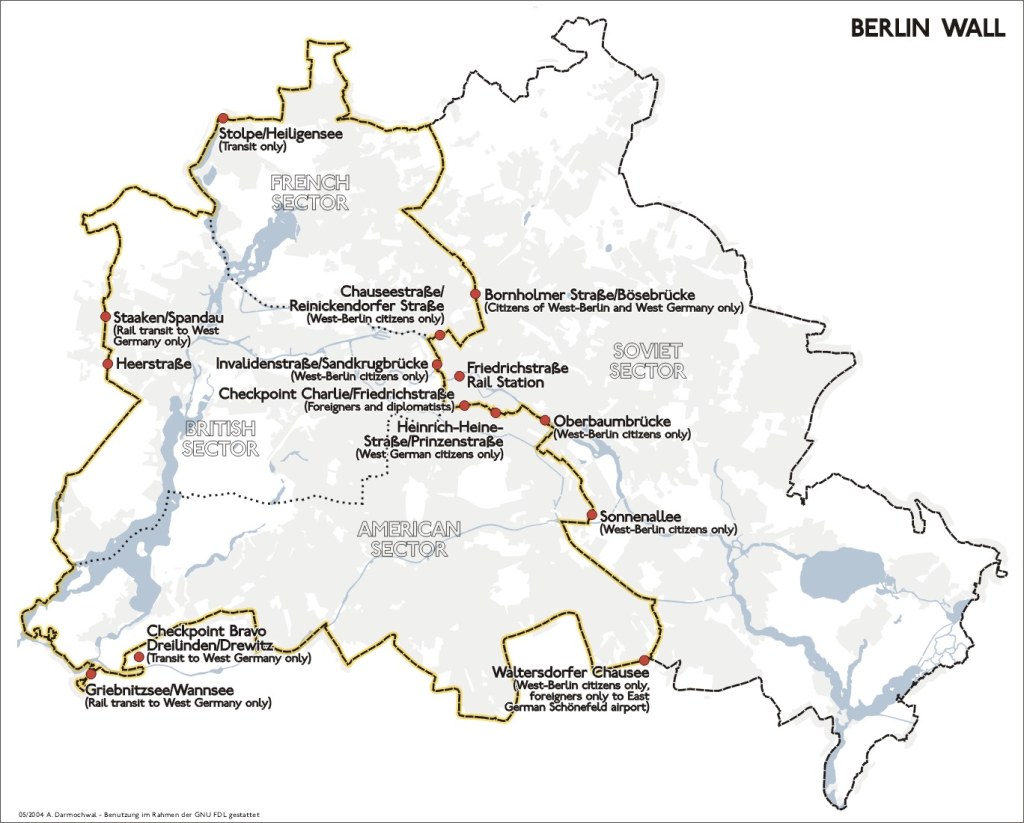Discover The Fascinating Mapa Del Muro De Berlin: Unveiling History’s Hidden Walls
The Berlin Wall Map: A Historic Symbol of Division
Introduction
Dear Berlin Readers,
3 Picture Gallery: Discover The Fascinating Mapa Del Muro De Berlin: Unveiling History’s Hidden Walls



Welcome to this informative article about the Map of the Berlin Wall. In this piece, we will delve into the historical significance of this map and its role in documenting the division of Berlin during the Cold War. The Berlin Wall, often referred to as Muro de Berlin in Spanish, was a physical barrier that separated East and West Berlin from 1961 to 1989. This article aims to provide you with a comprehensive understanding of the Berlin Wall Map and its impact on the city and its people.
Table: Map of the Berlin Wall

Image Source: alamy.com
Key Information
Description
Location
The map shows the entire length of the Berlin Wall, spanning approximately 155 kilometers.
Divisions
The map clearly indicates the areas that were controlled by East Germany and West Germany during the Cold War.
Checkpoint Locations
Various checkpoints along the Berlin Wall are depicted on the map, including famous ones like Checkpoint Charlie.

Image Source: abcstatics.com
Escape Routes
The map highlights the few authorized escape routes that existed for those attempting to cross the border.
What is the Map of the Berlin Wall?
The Map of the Berlin Wall is a visual representation of the physical barrier that divided Berlin during the Cold War. It provides a detailed overview of the wall’s location, divisions, checkpoints, and escape routes. This map played a crucial role in documenting the division and served as a reminder of the political and ideological conflict between East and West Germany.
Who Built the Berlin Wall?

Image Source: berlinmap360.com
The Berlin Wall was constructed by the German Democratic Republic (East Germany) in 1961. The decision to build the wall was made by the Soviet Union and East German authorities as a measure to prevent the mass migration of East Germans to West Germany.
When Was the Berlin Wall Built and Demolished?
The construction of the Berlin Wall began on August 13, 1961, and it stood as a physical barrier for almost 28 years. The wall was finally demolished on November 9, 1989, following a series of peaceful protests and political changes in East Germany.
Where Was the Berlin Wall Located?
The Berlin Wall cut through the heart of Berlin, dividing the city into East and West. It stretched for approximately 155 kilometers, encircling West Berlin and separating it from the surrounding East German territory.
Why Was the Berlin Wall Built?
The Berlin Wall was built to prevent the mass exodus of East Germans to West Germany, which was experiencing greater economic prosperity and political freedom. It aimed to strengthen the Soviet Union’s control over East Germany and demonstrate the ideological division between the Eastern Bloc and the Western Bloc during the Cold War.
How Did the Berlin Wall Impact Berlin and Its People?
The Berlin Wall had a profound impact on Berlin and its people. Families and friends were separated, and the city became a physical symbol of division. The wall restricted the movement and freedom of East Germans, leading to widespread dissatisfaction and attempts to escape. The eventual fall of the wall symbolized the reunification of Germany and the end of the Cold War.
Pros and Cons of the Berlin Wall
Pros:
Prevented mass migration and brain drain from East Germany.
Maintained stability and control for the Soviet Union in the Eastern Bloc.
Served as a deterrent against potential military conflicts between East and West.
Cons:
Separated families and caused immense emotional distress.
Restricted personal freedom and limited access to opportunities.
Symbolized the division and tensions of the Cold War.
Frequently Asked Questions (FAQ)
1. Was it possible to cross the Berlin Wall?
Yes, it was possible to cross the Berlin Wall, although it was extremely dangerous and carried severe consequences if caught by East German border guards.
2. How many people successfully crossed the Berlin Wall?
Estimates suggest that around 5,000 people managed to escape across the Berlin Wall, while many others failed in their attempts.
3. Did any famous attempts to cross the Berlin Wall occur?
Yes, several famous attempts to cross the Berlin Wall took place, such as the successful escape of Conrad Schumann, who famously leaped over the barbed wire in 1961.
4. How did the fall of the Berlin Wall impact global politics?
The fall of the Berlin Wall marked the end of the Cold War and led to significant geopolitical changes, including the reunification of Germany and the collapse of the Soviet Union.
5. Can sections of the Berlin Wall still be seen today?
Yes, several sections of the Berlin Wall have been preserved and can be visited as a historic monument in Berlin, serving as a reminder of Germany’s divided past.
Conclusion
In conclusion, the Map of the Berlin Wall offers a visual representation of the historic division that plagued Berlin during the Cold War. It serves as a testament to the enduring human spirit and the ultimate desire for freedom. While the Berlin Wall brought immense suffering and hardship, its eventual fall brought about a new era of unity and hope. Today, we can reflect on this dark chapter in history and appreciate the importance of overcoming division and striving for a better future.
Thank you for reading and engaging with this article. We hope it has provided valuable insights into the significance of the Map of the Berlin Wall.
Final Remarks
Disclaimer: This article aims to provide informative content about the Map of the Berlin Wall. The views and interpretations presented here are based on historical records and research. The author acknowledges the complexities of this topic and encourages further exploration and study of the Berlin Wall’s impact on Berlin and the world.
This post topic: Berlin



![Irving Berlin - Alexander's Ragtime Band []](https://blogexpressions.biz/wp-content/uploads/2023/07/irving-berlin-alexander-s-ragtime-band-150x150.jpg)